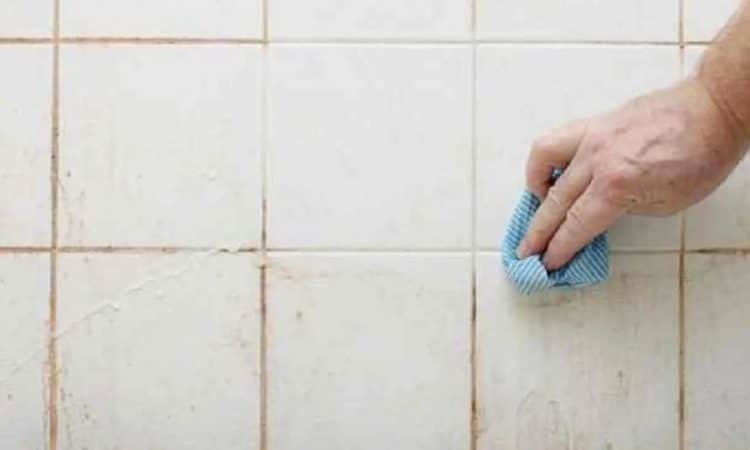
How to clean black floor joints: here’s grandma’s trick
Have you ever thought about how floor joints can make or break the look of your home? They might be small, but they play a big role in how your space is perceived. Over time, these tiny gaps between tiles can collect dirt, dust, and moisture, turning them into tricky-to-clean areas. Black joints not only make a room look neglected, but they can also be a breeding ground for bacteria and mold, especially in damp rooms like bathrooms and kitchens. So, let’s give floor joints the TLC they deserve! With a little effort, you can keep your home looking its best.
But never fear! Today we will explore a simple and natural method, handed down from our grandmothers, to restore shine to floor joints without resorting to harsh and expensive chemicals.
Grandma’s Trick: Sodium Bicarbonate and Vinegar.
The method we propose is a traditional classic: the use of baking soda and white vinegar. Both of these ingredients are readily available in the kitchen, inexpensive and above all environmentally friendly.
Ingredients needed:
- Baking soda
- White vinegar
- Old toothbrush or a hard-bristled brush
- A cloth or sponge
- Warm water
Procedure:
- Preparing the mixture: Start by making a paste of baking soda. Mix a few tablespoons of baking soda with a little water until you get a thick, creamy consistency. This paste will act as a gentle abrasive, ideal for removing encrusted dirt from joints without damaging the tiles.
- Application: Using a spoon or directly with your fingers, apply the baking soda paste to the blackened joints, making sure to cover all the cracks well. Leave for about 10 to 15 minutes so that the baking soda begins to work on the dirt.
- Chemical reaction: After the baking soda has had time to act, carefully pour white vinegar over the baking soda paste. The vinegar will immediately react with the baking soda, creating an effervescent foam that will help lift encrusted dirt from the joints. This step is critical for dissolving stubborn stains and thoroughly sanitizing.
- Brushing: Using an old toothbrush or a hard-bristled brush, scrub the joints vigorously. The combination of the scrubbing paste and the chemical reaction with vinegar will make this much easier and more effective. Continue scrubbing until you see the joints return to their original color.
- Rinse: Once the cleaning is complete, rinse the floor with warm water to remove any residual baking soda and vinegar. Finally, wipe with a dry cloth to prevent water from pooling in the joints and causing further moisture problems.
Other Natural Remedies for Cleaning Joints.
If baking soda and vinegar are not enough for your needs, there are other natural remedies you can try:
1. Lemon Juice: Lemon is a powerful natural bleaching agent due to its high citric acid content. You can use pure lemon juice, applying it directly to the joints and letting it work for about 10 minutes before scrubbing and rinsing.
2. Salt and baking soda: Mix equal parts coarse salt and baking soda and add a little water to create an abrasive paste. The salt will help scrape away dirt, while the baking soda will act as a cleaner.
3. Hydrogen peroxide: Also known as hydrogen peroxide, hydrogen peroxide is an excellent whitener and disinfectant. You can spray it directly on the joints and let it sit for a few minutes before scrubbing.
Helpful Tips for Keeping Grout Joints Clean.
Cleaning floor joints can be a lot of work, but by following a few simple tips, you can reduce the frequency of this task and keep your joints clean longer:
- Regular cleaning: Don’t wait for the joints to turn black before taking action. Regular cleaning, even with just warm water and mild soap, can prevent dirt and mold buildup.
- Ventilation: Make sure that damp rooms, such as the bathroom, are always well ventilated. Moisture is a major cause of mold growth in joints.
- Joint sealant: Consider applying a specific joint sealant. This product creates a protective barrier that prevents dirt and moisture from entering the joints, keeping them clean longer.
- Dry cloth after cleaning: After washing the floor, always wipe it with a dry cloth to remove excess water. This will prevent moisture from pooling in the joints.
- Avoid harsh chemicals: Using very strong chemicals can damage the joints over time, making them porous and more susceptible to dirt. Always prefer natural methods or specific products for cleaning the joints.
Conclusion
Cleaning black floor grout joints may seem like a daunting task, but with the right method and a little patience, you can get great results. Grandma’s trick with baking soda and vinegar is a simple, inexpensive and natural remedy that can breathe new life into your floor joints. Try this method and enjoy the satisfaction of seeing your floor shining like new again!
Ultimately, keeping your joints clean not only improves the appearance of your home, but also helps create a healthier and more pleasant environment for the whole family.

